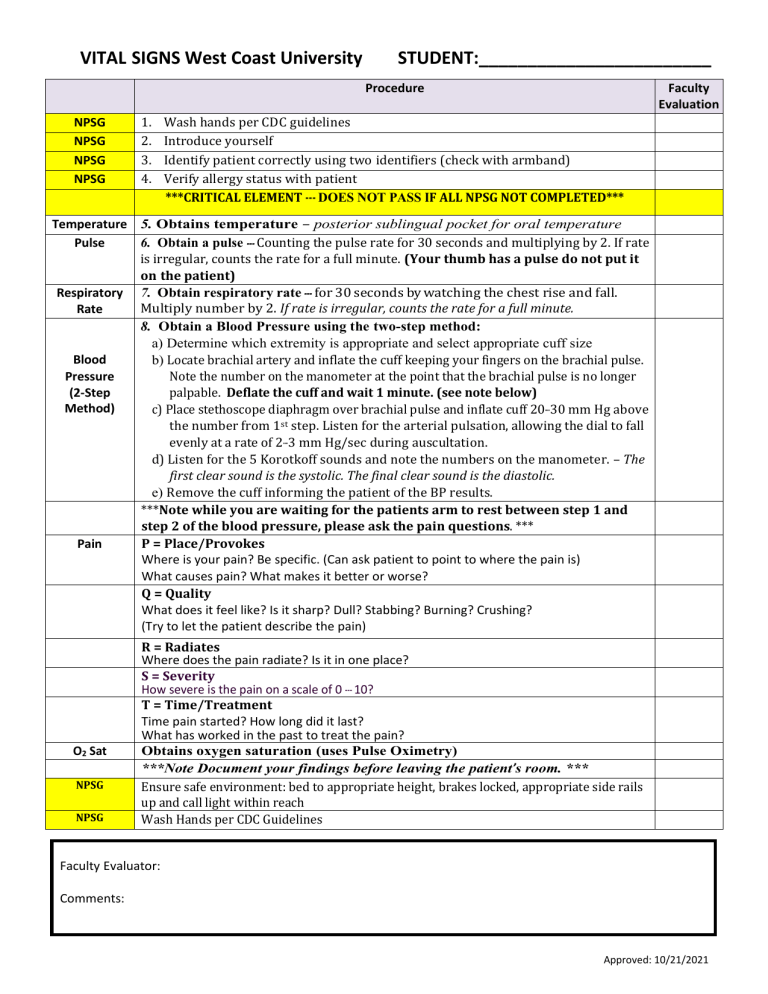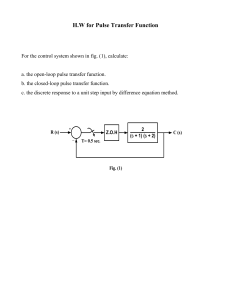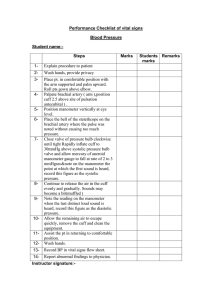
VITAL SIGNS West Coast University STUDENT:________________________ Procedure NPSG NPSG NPSG NPSG Temperature Pulse Respiratory Rate Blood Pressure (2-Step Method) Pain O2 Sat NPSG NPSG 1. 2. 3. 4. Faculty Evaluation Wash hands per CDC guidelines Introduce yourself Identify patient correctly using two identifiers (check with armband) Verify allergy status with patient ***CRITICAL ELEMENT -­­ DOES NOT PASS IF ALL NPSG NOT COMPLETED*** 5. Obtains temperature – posterior sublingual pocket for oral temperature 6. Obtain a pulse --- Counting the pulse rate for 30 seconds and multiplying by 2. If rate is irregular, counts the rate for a full minute. (Your thumb has a pulse do not put it on the patient) 7. Obtain respiratory rate -­‐ for 30 seconds by watching the chest rise and fall. Multiply number by 2. If rate is irregular, counts the rate for a full minute. 8. Obtain a Blood Pressure using the two-step method: a) Determine which extremity is appropriate and select appropriate cuff size b) Locate brachial artery and inflate the cuff keeping your fingers on the brachial pulse. Note the number on the manometer at the point that the brachial pulse is no longer palpable. Deflate the cuff and wait 1 minute. (see note below) c) Place stethoscope diaphragm over brachial pulse and inflate cuff 20-­­30 mm Hg above the number from 1st step. Listen for the arterial pulsation, allowing the dial to fall evenly at a rate of 2-­­3 mm Hg/sec during auscultation. d) Listen for the 5 Korotkoff sounds and note the numbers on the manometer. – The first clear sound is the systolic. The final clear sound is the diastolic. e) Remove the cuff informing the patient of the BP results. ***Note while you are waiting for the patients arm to rest between step 1 and step 2 of the blood pressure, please ask the pain questions. *** P = Place/Provokes Where is your pain? Be specific. (Can ask patient to point to where the pain is) What causes pain? What makes it better or worse? Q = Quality What does it feel like? Is it sharp? Dull? Stabbing? Burning? Crushing? (Try to let the patient describe the pain) R = Radiates Where does the pain radiate? Is it in one place? S = Severity How severe is the pain on a scale of 0 -­­ 10? T = Time/Treatment Time pain started? How long did it last? What has worked in the past to treat the pain? Obtains oxygen saturation (uses Pulse Oximetry) ***Note Document your findings before leaving the patient’s room. *** Ensure safe environment: bed to appropriate height, brakes locked, appropriate side rails up and call light within reach Wash Hands per CDC Guidelines Faculty Evaluator: Comments: Approved: 10/21/2021




